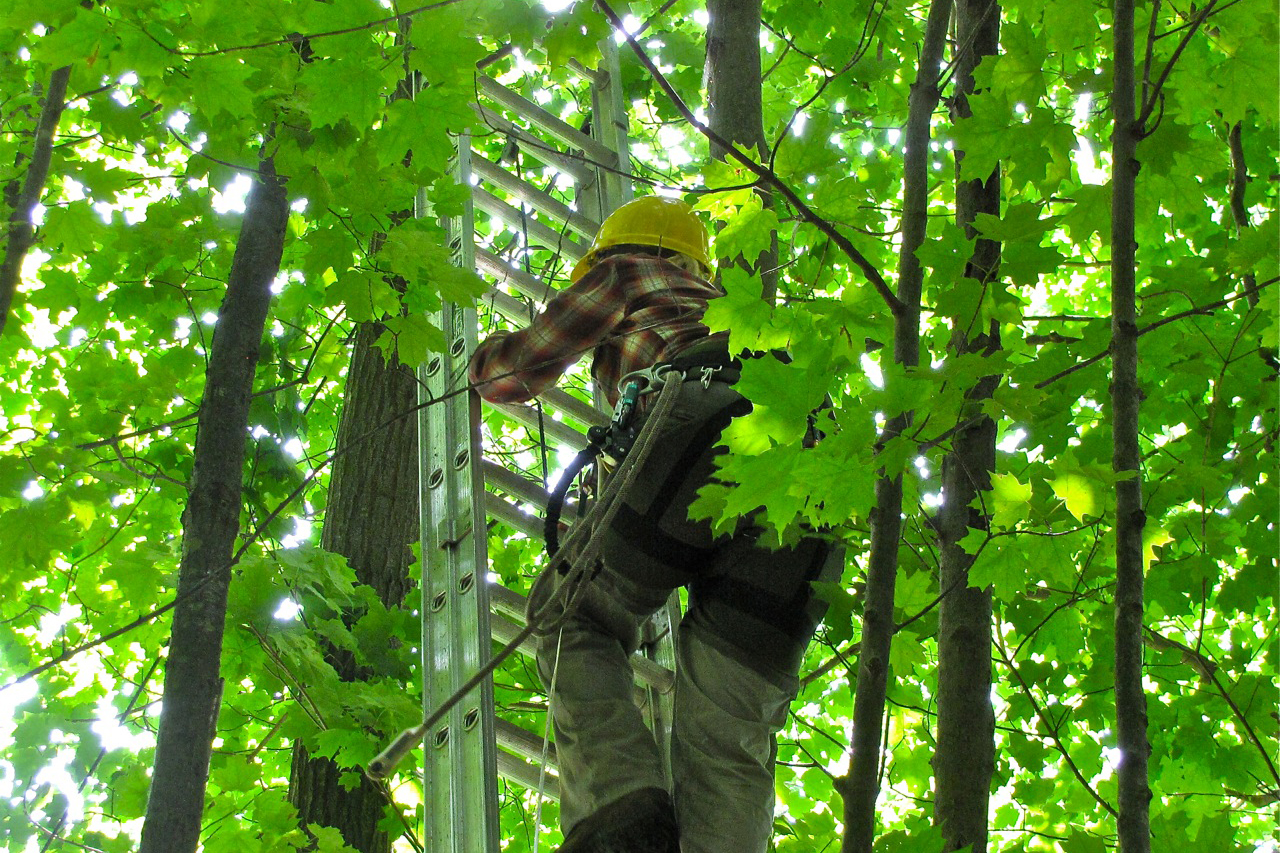Deep in the woods behind Horsebarn Hill is a lab made up of various species of trees shifting and swaying under the New England elements – ice, snow, wind, and torrential rain.
The state-of-the-art sensors on the trees produce data as they move, biomechanics information that is valuable to a team of researchers from UConn and Eversource Energy Center. With that information, they hope to enhance emergency preparedness during storms, and reduce and shorten outages during storms.
 The $9 million grant from Eversource, which will be spread out over five years, contributed to a record year in fiscal 2016 for the UConn Foundation’s fundraising for research, more than doubling its prior record year. Over the past three years, gifts and grants for research have grown dramatically from $7.1 million in 2014 and $9.6 million in 2015, to $25.3 million in 2016.
The $9 million grant from Eversource, which will be spread out over five years, contributed to a record year in fiscal 2016 for the UConn Foundation’s fundraising for research, more than doubling its prior record year. Over the past three years, gifts and grants for research have grown dramatically from $7.1 million in 2014 and $9.6 million in 2015, to $25.3 million in 2016.
These totals are just a fraction of UConn’s nearly $250 million annual research enterprise, which includes federal grants, but they – like the trees the researchers are monitoring – are an important part of the landscape.
Industry partnerships like the Eversource project fund researchers and teach graduate students research skills while leveraging the research capabilities of the state’s flagship public university. Together, they support economic growth in Connecticut and lead to innovative discoveries, said Joshua Newton, president and CEO of the UConn Foundation.
“The partnerships provide valuable research for companies, as well as scholarships and fellowships for the students and faculty doing the research,” he said. “They are helping to build the next generation workforce by training researchers and scientists – and often hiring them.”
UConn is also teaming up with industry leaders in the life sciences to develop new healthcare technologies and therapies. New Haven-based Alexion Pharmaceuticals and UConn recently announced a joint fund to develop life-saving therapies for patients with rare and devastating diseases.
The new fund expands upon existing research collaborations between faculty and Alexion. David Goldhamer, a professor of molecular and cell biology, for instance, identified the cell type responsible for a group of rare and disabling disorders, and has developed disease models that can be used to test new potential therapies.
Collaborations between UConn and industry have led to innovations in several fields, including precision medicine, sustainable technology, diagnostics, advanced materials and additive manufacturing, software, polymers and composites, bioinformatics, drug development and delivery, biomedical devices, nanotechnology, and cybersecurity.
New UConn startups and external technology ventures can also find the physical space and business support they need in UConn’s Technology Incubation Program (TIP), which has two major locations, in Storrs and at UConn Health in Farmington.
“A critical part of UConn’s research mission is to support the development of innovative technologies coming out of University labs that could benefit Connecticut’s citizens and grow the state’s economy,” said Jeffrey Seemann, UConn’s vice president for research. “We’ve seen very positive growth in the area of technology commercialization over the past several years, and we’re confident the trend will continue, as UConn supports University startups and fosters new and existing relationships with our industry partners.”
With the Eversource partnership, researchers are working in the air as well as on the ground. Scientists from the Department of Natural Resources and the Environment are using laser technology images from planes to create 3-D computer models of a neighborhood trees and phone, cable, and power lines. The outcome: a snapshot of tree growth rates that can impact utilities.
Leveraging the expertise of UConn’s faculty, post-doctoral and graduate researchers, and industry partners, experts are building the electric grid of the future.
“The grid of the future will be unlike anything we’ve encountered, with smart homes, smart cities, and an intelligent, interactive, automated grid,” said Ken Bowes, vice president of transmission performance at Eversource Energy. “With our partnership with UConn, our vision for the Eversource Energy Center as a scientific, research, and operational hub is a reality. Our Center is ready to lead these important conversations, driving the innovations and advances that will create the grid of the future.”



